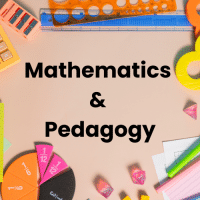CTET & State TET Exam > CTET & State TET Questions > Assertion (A): In order to make the process o...
Start Learning for Free
Assertion (A): In order to make the process of learning participative there is a need to shift from mere imparting of information to debate and discussion.
Reasoning (R): This approach to learning will keep both the learner and teacher alive to social realities.
Reasoning (R): This approach to learning will keep both the learner and teacher alive to social realities.
- a)Both (A) and (R) are true and (R) is the correct explanation of (A)
- b)Both (A) and (R) are true and (R) is the incorrect explanation of (A)
- c)(A) is true but (R) is false
- d)(A) is false but (R) is true
Correct answer is option 'A'. Can you explain this answer?
| FREE This question is part of | Download PDF Attempt this Test |
Most Upvoted Answer
Assertion (A): In order to make the process of learning participative ...
Social sciences comprise a branch of knowledge that basically studies human society or human relationships. Social sciences study the social behavior of human life.
- In order to make the process of learning participative, there is a need to shift from mere imparting of information by engaging children through inquiry, exploration, questioning, debate, application, and reflection, leading to theory building and the creation of new ideas/ propositions.
- The teacher needs to encourage children to answer the questions in social sciences in their own words and from their own experiences, make an attempt to develop multiple perspectives upon the social science concepts and issues. This approach to learning will keep both the learner and teacher alive to social realities.
- In social science classes, we need to hear the vivid experiences of the children acquired by them through interaction with the local environment.
- Teachers need to provide the scope for classroom talks in our transactional strategies.
Hence, it can be concluded that Both (A) and (R) are true and (R) is the correct explanation of (A).
Attention CTET & State TET Students!
To make sure you are not studying endlessly, EduRev has designed CTET & State TET study material, with Structured Courses, Videos, & Test Series. Plus get personalized analysis, doubt solving and improvement plans to achieve a great score in CTET & State TET.

|
Explore Courses for CTET & State TET exam
|

|
Similar CTET & State TET Doubts
Assertion (A): In order to make the process of learning participative there is a need to shift from mere imparting of information to debate and discussion.Reasoning (R): This approach to learning will keep both the learner and teacher alive to social realities.a)Both (A) and (R) are true and (R) is the correct explanation of (A)b)Both (A) and (R) are true and (R) is the incorrect explanation of (A)c)(A) is true but (R) is falsed)(A) is false but (R) is trueCorrect answer is option 'A'. Can you explain this answer?
Question Description
Assertion (A): In order to make the process of learning participative there is a need to shift from mere imparting of information to debate and discussion.Reasoning (R): This approach to learning will keep both the learner and teacher alive to social realities.a)Both (A) and (R) are true and (R) is the correct explanation of (A)b)Both (A) and (R) are true and (R) is the incorrect explanation of (A)c)(A) is true but (R) is falsed)(A) is false but (R) is trueCorrect answer is option 'A'. Can you explain this answer? for CTET & State TET 2024 is part of CTET & State TET preparation. The Question and answers have been prepared according to the CTET & State TET exam syllabus. Information about Assertion (A): In order to make the process of learning participative there is a need to shift from mere imparting of information to debate and discussion.Reasoning (R): This approach to learning will keep both the learner and teacher alive to social realities.a)Both (A) and (R) are true and (R) is the correct explanation of (A)b)Both (A) and (R) are true and (R) is the incorrect explanation of (A)c)(A) is true but (R) is falsed)(A) is false but (R) is trueCorrect answer is option 'A'. Can you explain this answer? covers all topics & solutions for CTET & State TET 2024 Exam. Find important definitions, questions, meanings, examples, exercises and tests below for Assertion (A): In order to make the process of learning participative there is a need to shift from mere imparting of information to debate and discussion.Reasoning (R): This approach to learning will keep both the learner and teacher alive to social realities.a)Both (A) and (R) are true and (R) is the correct explanation of (A)b)Both (A) and (R) are true and (R) is the incorrect explanation of (A)c)(A) is true but (R) is falsed)(A) is false but (R) is trueCorrect answer is option 'A'. Can you explain this answer?.
Assertion (A): In order to make the process of learning participative there is a need to shift from mere imparting of information to debate and discussion.Reasoning (R): This approach to learning will keep both the learner and teacher alive to social realities.a)Both (A) and (R) are true and (R) is the correct explanation of (A)b)Both (A) and (R) are true and (R) is the incorrect explanation of (A)c)(A) is true but (R) is falsed)(A) is false but (R) is trueCorrect answer is option 'A'. Can you explain this answer? for CTET & State TET 2024 is part of CTET & State TET preparation. The Question and answers have been prepared according to the CTET & State TET exam syllabus. Information about Assertion (A): In order to make the process of learning participative there is a need to shift from mere imparting of information to debate and discussion.Reasoning (R): This approach to learning will keep both the learner and teacher alive to social realities.a)Both (A) and (R) are true and (R) is the correct explanation of (A)b)Both (A) and (R) are true and (R) is the incorrect explanation of (A)c)(A) is true but (R) is falsed)(A) is false but (R) is trueCorrect answer is option 'A'. Can you explain this answer? covers all topics & solutions for CTET & State TET 2024 Exam. Find important definitions, questions, meanings, examples, exercises and tests below for Assertion (A): In order to make the process of learning participative there is a need to shift from mere imparting of information to debate and discussion.Reasoning (R): This approach to learning will keep both the learner and teacher alive to social realities.a)Both (A) and (R) are true and (R) is the correct explanation of (A)b)Both (A) and (R) are true and (R) is the incorrect explanation of (A)c)(A) is true but (R) is falsed)(A) is false but (R) is trueCorrect answer is option 'A'. Can you explain this answer?.
Solutions for Assertion (A): In order to make the process of learning participative there is a need to shift from mere imparting of information to debate and discussion.Reasoning (R): This approach to learning will keep both the learner and teacher alive to social realities.a)Both (A) and (R) are true and (R) is the correct explanation of (A)b)Both (A) and (R) are true and (R) is the incorrect explanation of (A)c)(A) is true but (R) is falsed)(A) is false but (R) is trueCorrect answer is option 'A'. Can you explain this answer? in English & in Hindi are available as part of our courses for CTET & State TET.
Download more important topics, notes, lectures and mock test series for CTET & State TET Exam by signing up for free.
Here you can find the meaning of Assertion (A): In order to make the process of learning participative there is a need to shift from mere imparting of information to debate and discussion.Reasoning (R): This approach to learning will keep both the learner and teacher alive to social realities.a)Both (A) and (R) are true and (R) is the correct explanation of (A)b)Both (A) and (R) are true and (R) is the incorrect explanation of (A)c)(A) is true but (R) is falsed)(A) is false but (R) is trueCorrect answer is option 'A'. Can you explain this answer? defined & explained in the simplest way possible. Besides giving the explanation of
Assertion (A): In order to make the process of learning participative there is a need to shift from mere imparting of information to debate and discussion.Reasoning (R): This approach to learning will keep both the learner and teacher alive to social realities.a)Both (A) and (R) are true and (R) is the correct explanation of (A)b)Both (A) and (R) are true and (R) is the incorrect explanation of (A)c)(A) is true but (R) is falsed)(A) is false but (R) is trueCorrect answer is option 'A'. Can you explain this answer?, a detailed solution for Assertion (A): In order to make the process of learning participative there is a need to shift from mere imparting of information to debate and discussion.Reasoning (R): This approach to learning will keep both the learner and teacher alive to social realities.a)Both (A) and (R) are true and (R) is the correct explanation of (A)b)Both (A) and (R) are true and (R) is the incorrect explanation of (A)c)(A) is true but (R) is falsed)(A) is false but (R) is trueCorrect answer is option 'A'. Can you explain this answer? has been provided alongside types of Assertion (A): In order to make the process of learning participative there is a need to shift from mere imparting of information to debate and discussion.Reasoning (R): This approach to learning will keep both the learner and teacher alive to social realities.a)Both (A) and (R) are true and (R) is the correct explanation of (A)b)Both (A) and (R) are true and (R) is the incorrect explanation of (A)c)(A) is true but (R) is falsed)(A) is false but (R) is trueCorrect answer is option 'A'. Can you explain this answer? theory, EduRev gives you an
ample number of questions to practice Assertion (A): In order to make the process of learning participative there is a need to shift from mere imparting of information to debate and discussion.Reasoning (R): This approach to learning will keep both the learner and teacher alive to social realities.a)Both (A) and (R) are true and (R) is the correct explanation of (A)b)Both (A) and (R) are true and (R) is the incorrect explanation of (A)c)(A) is true but (R) is falsed)(A) is false but (R) is trueCorrect answer is option 'A'. Can you explain this answer? tests, examples and also practice CTET & State TET tests.

|
Explore Courses for CTET & State TET exam
|

|
Suggested Free Tests
Signup for Free!
Signup to see your scores go up within 7 days! Learn & Practice with 1000+ FREE Notes, Videos & Tests.
























